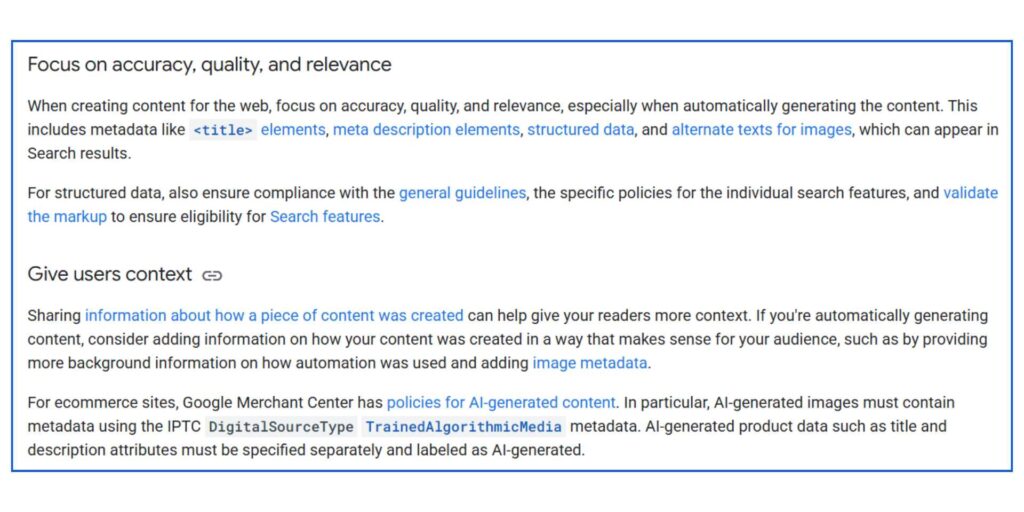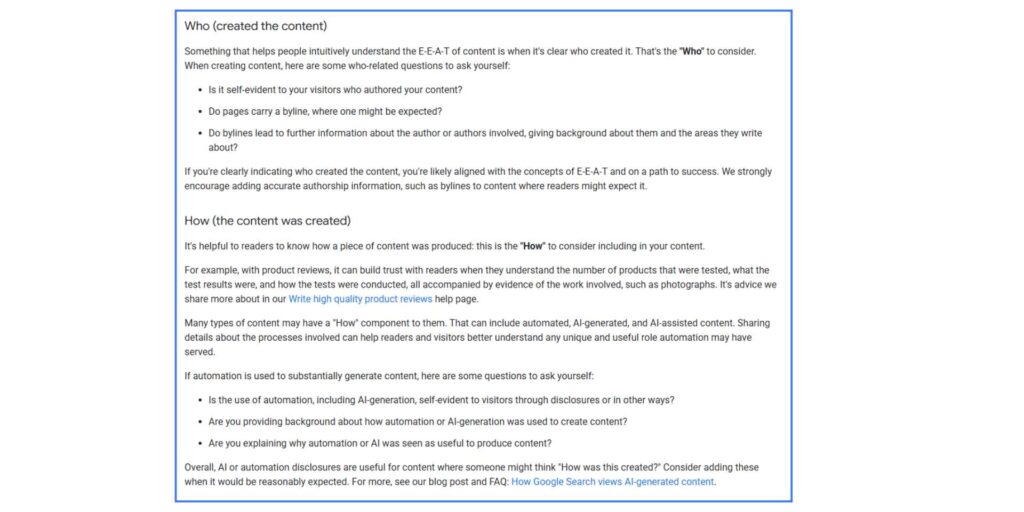The use of artificial intelligence writing tools has dramatically transformed the digital landscape and, consequently, the way content is produced through the use of these tools. A wide range of content creators, from individual bloggers to large-scale marketing teams, are now relying on these tools in order to churn out high volumes of content in a very short time. This phenomenon is so prevalent that according to Influencer Marketing Hub, 54.5% of marketers think that AI will considerably improve their marketing work, while 61.4% are already using AI in their marketing activities.
The fundamental issue faced by those who utilize these tools is: “Is it possible that content produced by AI will harm my SEO or be detected?” This post aims to teach you how to use AI for article submissions without getting penalized and adhering to Google’s guidelines. The intention is to help you use AI as your content enhancer, not as a shortcut that gets you into trouble.
Growth of AI Writing Tools
AI writing tools have been developed at a rapid pace in recent years and have changed the way people produce online content. From drafting blogs to writing SEO-focused articles, these tools help with speed and convenience.
However, quite a few bloggers and marketers still harbor the concern of whether employing AI-based content can lead to problems in Google rankings.
Why Bloggers & SEO Professionals Use AI for Article Submissions
The reason why writers and SEO professionals use AI tools is that they streamline the writing process and make it faster as well as more convenient. The top reasons are:
- Time Efficiency: First drafts are made fast by AI, thus the vast majority of time is left for polishing and insight inclusion.
- Keyword Support: Several tools bring about the most relevant terms to the subject matter that tend to match the user’s queries.
- Reduction of Cost: The use of AI for the production of large volumes of content can go a long way to cutting down the cost of the company instead of hiring writers.
- Idea support: AI can suggest outlines, headings, or starting points when inspiration is low.
In light of those advantages, content producers have even more opportunities to add expertise, polish readability, and make content more appealing to the audience.
Core Concern: Can AI-Written Articles Harm My SEO or Get Flagged?
The central question is whether AI-written articles lead to the imposition of penalties on a website. The response revolves around quality, not the instrument.
- Google does not ban AI-written text.
- Problems arise when content is poor in quality, repetitive, or solely produced to cheat search engines.
- Google is on the lookout for experience, expertise, authority, and trust in all types of writing.
- Check all facts, be accurate, and share your opinion in the text.
- Google rewards content that is helpful and trustworthy, regardless of the method in which it was made.
In simple terms, it is safe to use AI assistants if writers are thorough with their editing, unique with their ideas, and accurate with the final work. Consequently, this is the way AI makes itself a tool, rather than a peril, for better content and stronger search results.
Google’s Policy on AI Content

Google’s stance on AI content is quite simple and is user-centric. It does not prohibit the use of AI for content creation, but it goes very far in prohibiting the creation of automatically generated content solely for the purpose of manipulating the search rankings.
The main thing is to make sure that any AI-supported writing is not just a text produced without human intervention, but rather a valuable one for the user.
Google’s Search Essentials
Google’s Search Essentials ranks content that is helpful and newly created as the first priority, regardless of who or what made it. In fact, Google’s primary function in ranking systems is to ensure the end-user experience is the best possible.
If a content query, even an AI one, is factual and provides an excellent reading experience, it is in line with Google’s central tenets. Google always seeks to bring the finest outcomes to users, no matter which tool was used to make the content.
Clarifying a Common Myth
It is widely assumed that AI content is doomed right from the start, i.e., they tend to be under suspicion, grabbed by the system, and subsequently, they get punished. AI is not in the spotlight; instead, low-quality spammy content is.
The focus of Google’s spam policies is on the use of AI to generate vast quantities of meaningless, repetitive, or trivialized text that is nonsensical. And no violation is committed if AI is used to write a well-researched, good article.
Appropriate use of AI or automation is not against our guidelines. This means that it is not used to generate content primarily to manipulate search rankings, which is against our spam policies. – Google
Google’s Official Stance
Google, in 2023, clarified its position, saying, “the suitable use of AI does not conflict with our guidelines.” Our creators may consider AI as a helpful tool to be in the final cut of their workflow, with the support of that statement.
The statement emphasizes that the cause of punishment is not due to the use of AI but to the production of user-unfriendly content with it. It is the final item, not the way of production, that gets the attention.
The Importance of EEAT
The EEAT (Experience, Expertise, Authoritativeness, and Trustworthiness) badge is the key to the top spot of any search engine ranking for a given piece of content. Even when AI is used, the facts in the content must be correct, and it must reflect knowledge of the subject.
AI may do the format and the first draft, but a human should always check, refine, and add their own experience or unique perspective for it to be considered authoritative and trustworthy. Such human supervision is still reasonably necessary in order for the content to comply with Google’s high standards.
Why Your Content Gets Flagged as AI (Even If You Wrote It Yourself)
AI detectors, which look for AI features in a text, can sometimes give false signals. If an article is entirely your own work, it still might be flagged for several reasons:
- Overly Formulaic Writing: AI often generates sentences with similar length and structure. The predictability of this can make the text appear to be robotic and unnatural.
- No Personal Voice: The content of AI lacks the unique anecdotes, the personal opinions, or the specific real-world experiences, which are the typical features of the human writer.
- Over-Optimized SEO Keywords: One of the signals that AI created the content is the overly unnatural style of keyword use and the absence of a proper flow.
- AI Detectors (GPTZero, Turnitin, Originality.ai): The tools work by looking at perplexity and burstiness, which are measures of randomness and sentence variation. However, they are not entirely accurate and can wrongly accuse human writers if they happen to have low variation. Quite interestingly, OpenAI has shut down its own AI text classification service because of its lack of reliability.
Most importantly, Google doesn’t rely on AI detectors to identify AI content. The evaluation of the quality and originality of the content is what their systems are made for, not to figure out the tool that was used in creating it. This is a critical point for those who want to know how to use AI
for article submissions without getting penalized.
AI Detectors: How They Work (and Their Limitations)
AI detectors are built to tell if a human wrote a text or if it was generated by a machine. However, the reality is more complicated. These tools do not trace the actual source of the writing but rather pattern matching in language usage. Here’s how these tools commonly work:
1. Learn How Perplexity and Burstiness Work
The main features that AI detectors use to decide on the nature of the text are:
- Perplexity: This indicates how coherent or complicated the piece looks. AI-generated text usually contains predictable segments, which is why detectors easily distinguish them.
- Burstiness: This refers to the number of sentences, paragraph lengths, and structures. Human writing typically has a specific flow with both short and long sentences, whereas AI text is more regular in length and style.
By these two points, detectors try to decide if it is human-made or machine-made. However, since humans can write simply and repeat themes, the program may cause errors.
2. Be Aware of False Positives
One of the significant drawbacks of AI detectors is that they may wrongly classify natural texts as fake ones. For instance:
- If a student writes an essay on their own, the essay might still be flagged as AI-generated.
- The works of professional writers who tend to be concise and use simple sentences might be identified as AI-like.
The above-mentioned false positives serve as an example of how the reliability of the detectors decreases, particularly in a situation when the style of human writing happens to coincide with the patterns that AI tools usually follow.
3. Accept That Accuracy Remains Limited
No detection system can be absolutely accurate. In fact, OpenAI, which created its AI detector only to discontinue it later because it was not sufficiently precise, is a prime example. This points to one very significant limitation: The better the AI models get, the more natural the text will sound. Thus, detectors will have a harder time identifying them, trailing in their efficiency over time.
4. Understand Google’s Approach
What content creators worry most about is the question of whether Google disfavors or penalizes articles generated by AI. The response is that Google does not use AI detectors. Instead, its judging criteria are focused on the overall content quality. This comprises:
- Whether the content is helpful to the audience.
- Whether it is accurate and can be trusted.
- Whether the content gives readers something new instead of just rehashing what others have already said.
So, it is not the use of AI that is the main problem. The ranking issue comes from poor-quality, non-helpful content, no matter who or what wrote it.
Safe Ways to Use AI for Article Submissions

If you want to steer clear of being penalized and still churn out great pieces, treat AI as a colleague and not as a substitute. Here are some of the best practices:
- Brainstorming and Outlining: You might want to use AI to come up with ideas, do the research for the questions, or write a basic outline. This way, you can easily start, and that way, you can organize your thoughts without staring at a blank page.
- Drafting and Rewriting: An AI can be asked to write the first draft, and then you should do a heavy revision of it. Put a unique spin on it using your own voice, personal stories, and opinions. By doing this, the content becomes genuinely yours, and it also helps you practice how to properly use AI for writing article submissions without getting penalized.
- Fact-Checking: AI can be a fast information provider, but it might “hallucinate,” in other words, create false info. So never take the info as it is without checking it in trustworthy sources.
- Editing and Refinement: AI can do the work of checking grammar, spelling, and readability very effectively. At the same time, it can also offer more ground for recasting your sentence to become more transparent and precise. Without losing its uniqueness, the final output of your writing can be refined.
One can create a mix between AI and humans by simply following these guidelines. In this way, AI can be used as an authorized helper to perform the more algorithmic tasks, thereby freeing up the user’s time to focus on the creative and authoritative aspects.
Best Practices to Avoid Penalties
Working with AI for content creation of high quality and usefulness is a process that requires skill and experience in the right balance of human and AI-provided content. The point is to have technology as a co-author, but keeping the soul of the book human. The following part will guide you on how to use AI for article submissions without getting penalized, but rather to get the right results by submitting an article.
- Make it Personal: The easiest way to upgrade AI content is by inserting your stories, viewpoints, and real-life examples. While the AI can motivate the thoughts, only your distinctive experiences can make the paper genuine and engaging for the audience. This is one of the ways you exhibit your proficiency, a significant part of EEAT.
- Check Every Fact: AI tools sometimes generate incorrect information or “hallucinate” facts and data. Therefore, you should take the AI content and perform all the necessary checks and recheck it with the sources to avoid penalties and thus gain the trust of the reader.
- Avoid Publishing at Scale: Publishing a lot of articles that are AI-written in a short span of time will make Google apply its spam filters against you. The volume will be viewed as one of low-quality type, which is like a factory or mass production. On the contrary, becoming a publisher is about choosing a gradual release scheme. Instead of pumping out a bunch of shallow articles, you could concentrate more on quality, research-based text, and publish it a few times per week.
- Use Specific Prompts: The quality of the AI output is largely dependent on the quality of your input. Rather than using a generic and broad prompt like “write about SEO“, go for a more detailed and targeted one like “write a 500-word introduction to SEO for small business owners, focusing on on-page techniques and avoiding jargon.” Providing the AI with clear, detailed instructions, which also specify the tone, style, and content, will allow you to have a better quality of output from the AI.
- Edit for Natural Flow: If you are not satisfied with the AI content, you can rewrite and improve it. It is recommended that you vary your sentences, eliminate any repetitive words, and also ensure that the tone matches your brand or personal voice. The outcome should be the indistinguishable content.
Conclusion: AI as Your Writing Assistant, Not a Replacement
When done correctly, AI is a fast and productive tool for article submission. One of the best uses of AI is as a potent assistant who takes care of the repetitive, less creative parts, thus allowing the user to add the indispensable human features of innovation, expertise, and personal voice. By focusing on creating genuinely helpful and original content, you can use AI to increase your output and improve your SEO without fear of being penalized.
This method makes production both efficient and valuable to the audience. The aim is to combine human creativity with machine speed to deliver content of high quality and easy to find by users.
FAQs
1. Does Google penalize AI-written articles?
Google does not punish articles just because they were produced with AI. They are the ones responsible for the removal of poor-quality, non-informative, and spammy content from the ranking list, no matter if it was made by a human or a machine.
2. Is it illegal to use AI to write articles?
The use of AI to generate articles is not illegal. Copyright and intellectual property issues arise when AI uses copyrighted material to create content.
3. Is it okay to use AI to write articles?
One may use AI to facilitate the writing process in a number of ways, including idea generation, writing the first draft, and polishing the text. The most important thing is that the final product is original and informative.
4. Can Google know if an article is written by AI?
Google systems do not use AI detectors. They judge the quality of a piece by various signals, such as the degree of originality, helpfulness, and the overall value of the text to the reader.
5. How to avoid AI-written articles?
Creating content with your own voice, providing insights, and steering clear of cliché language and structure are the means to avoid AI-written articles. The role of the editor and the humans is very important.
